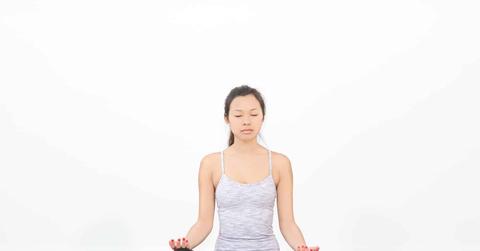Making The Most Of 1-Minute Meditations To Ease Anxiety

We’ve attributed a lot of extra stress and anxiety to the pandemic and all the casualties of isolation, health fears, the inability to travel, and more. The reality is that most of us have a burden of stress on us year-round, which amps up our inability to cope with anxiety.
As we deal with anxiety and stress, we often don’t have much space to cope – so learning some practices of short, adequate, and highly-effective meditative practices can help.
How 1-Minute Meditations Can Help
I used to think I was doing meditation wrong. I’d sit quietly and meditate in the middle of an intense anxious moment and be “okay” again in just 45 seconds to two minutes. I thought because I wasn’t calming my spirit for half an hour – or even 10 minutes – I was getting it wrong and somehow, I was missing the benefits of meditation.
It turns out, though, that one minute is enough time to calm your brain and slow those anxious thoughts. This single moment is enough to break the cycle of emotions piling on each other that bring about panic attacks in many cases. It’s not foolproof, of course – some situations require more than a minute to calm down – but the practice is effective in many cases, thanks to the way it can instantly clear away stressful thoughts, fears, and other concerns.
5 1-minute meditation practices to try:
Try any of these simple practices the next time you feel anxious, or, better yet, include them in your day every day, morning and night to start your day right and calm your thoughts before bed.
1. Inhale And Exhale Matching
Comfortably inhale and count how many seconds it takes to do so. Then, as you breathe out, match that count on your exhale. Repeat this for one minute – matching each breath to each other, rather than trying to keep the same count for all breaths.
Example – inhale 4, exhale 4. Inhale 3, exhale 3. Inhale 5, exhale 5. Etc.
2. Do a Short Body Scan
Think about your body one part at a time, starting with the top of your head and scanning downward. As you notice each part – head, elbow, knee, toe, etc. – focus your attention on that part of your body. Scan your entire body, noting how each part feels.
3. Practice Belly Breathing
Inhale a long, deep breath, imagining yourself blowing up a balloon in your stomach. Feel your belly expand while you inhale and place a hand there to feel it with more senses. Hold the air in for a long moment, then slowly exhale all the air out. Repeat for the full minute.
4. Idealizing Thoughts
Imagine a location where you can completely and totally relax – be that a spa, a tropical island beach, the bathtub, or someplace else. Close your eyes and visualize this place. Use all your senses to imagine yourself there: feel the silky robe, hear the tropical birds, smell the fragrant bath salts. Breathe in this feeling and continue visualizing for the full minute or longer.
5. 4-7-8 Breathing
Exhale audibly through your mouth, counting to eight as you exhale. Then, inhale quietly through your nose to the count of four. Now, hold your breath for the count of seven. Repeat for the full minute or longer.






